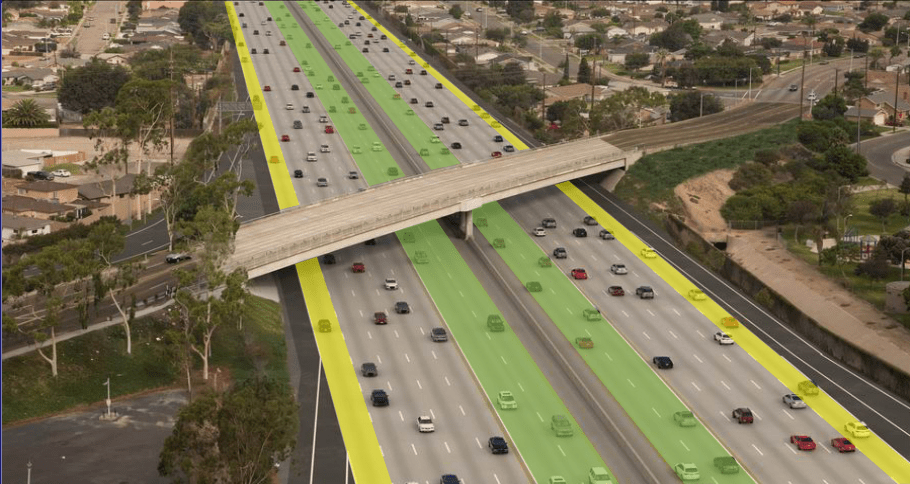Sometime in the next couple of months, construction will begin on the widening of the I-405 between State Route 73 and the I-605. OCTA approved a contract at its November Board of Directors meeting for $1.2 billion to add two lanes, a toll lane going north and another going south; adding one regular lane in each direction from Euclid Street to I-605; and making improvements to freeway entrances, exits and bridges.
Construction of the project could take up to 5 1/2 years and is estimated by OCTA to create mammoth time savings for commuters in 2040. By the end of the project, travel times are expected to take 29 minutes during rush hour and 13 minutes on the toll lanes; without, it's projected to take more than 2 hours in either regular or carpool lanes.
Construction could have begun as early as this month. When the project is complete the total cost is expected to be around $1.9 billion.
Sounds positive, right? Supposed common sense solutions to the regions bottleneck. Also, it sounds familiar.
In 2015, Metro finished adding carpool lanes on the I-405 between the I-10 and I-101 with the hopes of alleviating an area that Caltrans has dubbed one of the worst choke points for traffic in the state.
After politicians and Metro staffers rallied behind the project and $1.1 billion was spent on the project, there was no alleviation of traffic as was promised. Congestion didn't decrease or stabilize, it returned to the status quo. OCTA officials and staff are hoping this is not a cautionary tale that foretells the future for the 405 post-construction in Orange County.
At the same time the agency was approving a contract for a costly road widening, OCTA moved forward with another portion of its 360 Bus Plan that’s aimed to stem the tide of decreasing ridership and, perhaps more importantly to fiscally conservative board members, stem the tide of decreased farebox receipts. OCTA cut a few lines in areas with lower ridership and shifted them to areas with higher ridership, increased the fare of buses that traveled between the County, and decreased the price of a day pass from $5 to $4 until April 2017 -- day passes account for 35 percent of OCTA's riders.
The move was expected to increase the amount of money that the agency collects from riders, but would actually decrease ridership by nearly 25,000 boardings.

And at this Monday's OCTA board meeting, the results of those bus policy changes came in, and they weren't pretty.
The service changes had a slight gain in ridership when comparing June 2015 with June 2016 when the first round of changes went into effect. But comparing Octobers in 2015 and '16 shows the reverse with an average daily decrease of 171 riders. In areas where service was reduced, the June comparison showed a decrease by roughly half its ridership average, and in October an almost 3,000 ridership decline.
Instead of offering tweaks or recommendations to their plan, OCTA's attempt to reverse the downward trend has now been attributed to forces out of their control. Staff compared its ridership decrease to bus systems around the country and region, an increasing driver population, competition with ride sharing and rising housing affordability.
And the revenue? That's still an unknown. These moves, if they are saving money, are continuing a trend that started around 2012 that has seen bus service increase but to little impact on reversing ridership decline.
In March, OCTA will be releasing its State of Transit Report, so we'll get some more clarity on whether these changes made any difference. But in the meantime, OCTA could look at getting serious about more diverse modes of transport. With the grid layout throughout the County, and many wide streets that accommodate 7-10 travel lanes AND a center median, why not get legitimate Bus Rapid Transit system.






